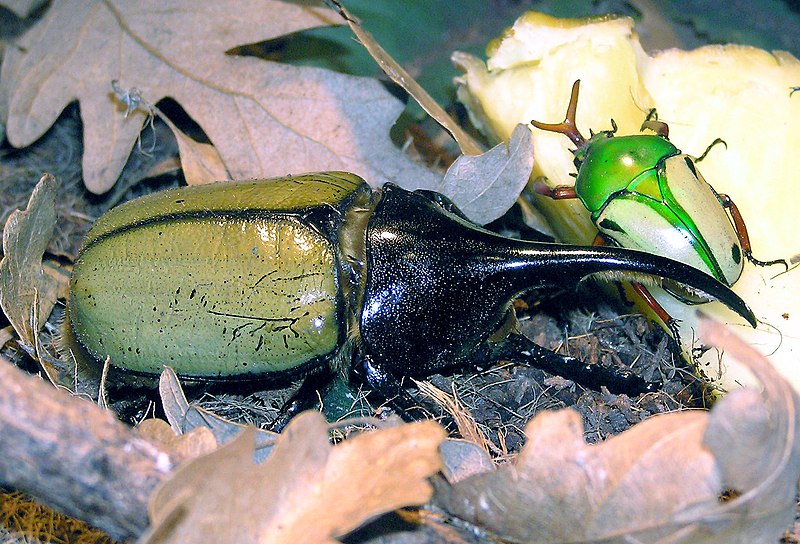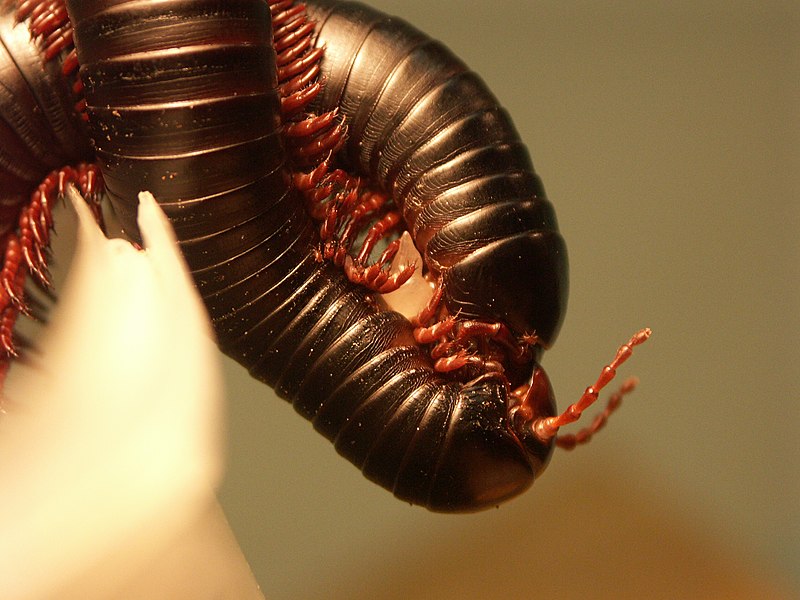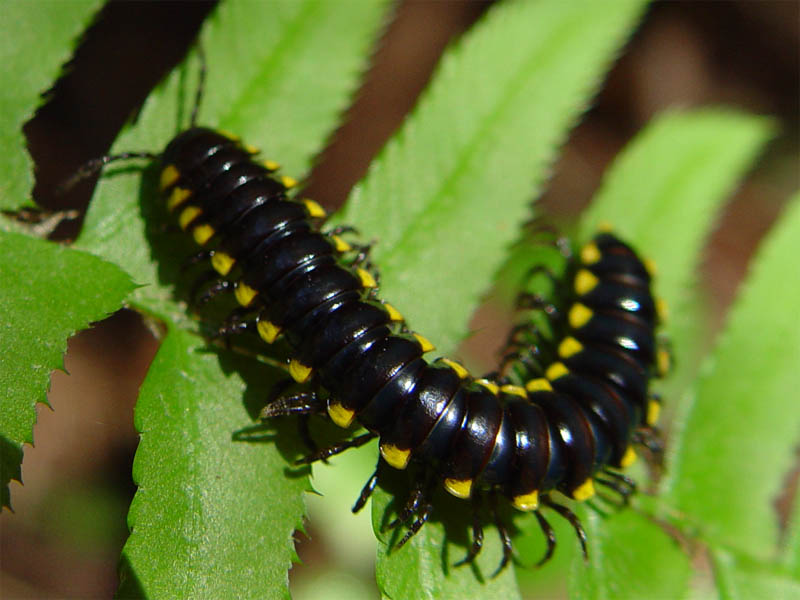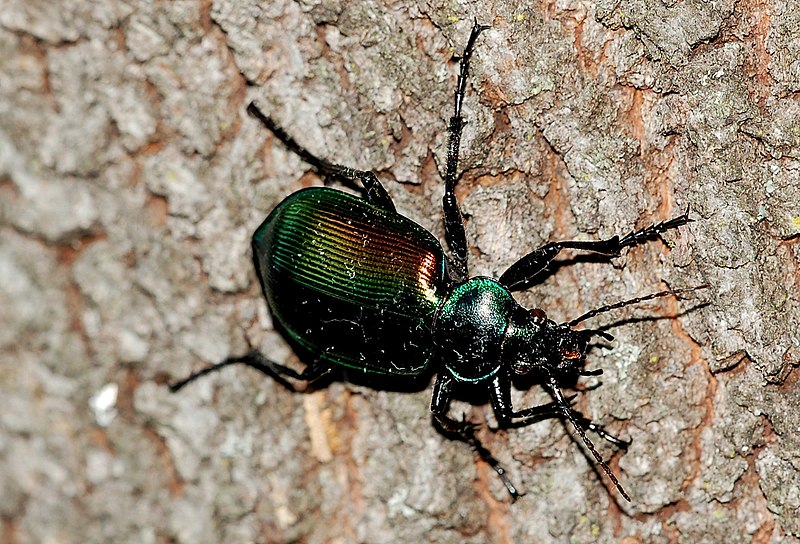Tarantulas and scorpions have long been invertebrate pet staples, with over 150 species being captive bred in large numbers. However, insect keeping, always popular in Japan but much less so elsewhere, is now coming into its own in the USA. I recently found that over 50 stick and leaf insect, 30 mantid, 25 cockroach and 25 beetle species, along with numerous grasshoppers, katydids, butterflies and moths, are now regularly bred in captivity.
Velvet Ants, Tarantula Wasps, Giant Water Bugs and innumerable others are also kept in smaller numbers, and are growing in popularity. An aquatic insect exhibit I recently designed for the Brooklyn Children’s Museum, featuring the usually ignored Water Scorpions and Whirligig, diving and water scavenger beetles, is a big hit with visitors.
Grand Possibilities
The potential diversity of insects that may be kept in captivity is limitless, and many exhibit their entire life cycles and full range of behaviors in a relatively limited space and time span. Those who keep insects are offered the real possibility of discovering new information.
behaviors in a relatively limited space and time span. Those who keep insects are offered the real possibility of discovering new information.
Conservation Value
Much of what has been learned by those keeping insects in private and public collections has conservation value. Captive breeding and reintroduction programs for endangered species ranging from Sphinx Moths in Arizona to Burying Beetles in Rhode Island have yielded promising results.
Other Invertebrates
An astonishing array of other terrestrial invertebrates are also being kept and bred in captivity, including Banana Slugs, trapdoor, orb-weaver, wolf and crab spiders, centipedes, millipedes, Vinegaroons and Sun Scorpions, to name just a few.
Further Reading
Japan’s Tama Zoo boasts 2 giant insect houses…be forewarned, insect aficionados who visit will emerge in shock, as did I!
Phasmids (walking sticks and walking leaves) have long been popular as captives in Europe. Photos of many of the nearly 3,000 described species, along with natural history notes, are posted here.
Founded in 1892, and with roots dating to 1872, the NY Entomological Society is an invaluable resource for insect enthusiasts. To learn more about this well-respected group and its publications, please visit their website.
 That Reptile Blog – Reptile, Amphibian and Exotic Pet Care and Information
That Reptile Blog – Reptile, Amphibian and Exotic Pet Care and Information

 and in the hopes of providing as many nutrients as possible, I began offering African giant millipedes a wide variety of food items. With the help of colleagues here and abroad, I eventually arrived at a diet that has allowed me to breed a number of native and exotic millipedes, and to maintain individual animals for over 10 years.
and in the hopes of providing as many nutrients as possible, I began offering African giant millipedes a wide variety of food items. With the help of colleagues here and abroad, I eventually arrived at a diet that has allowed me to breed a number of native and exotic millipedes, and to maintain individual animals for over 10 years. It seems that millipedes of many types (there are over 10,000 species described to date) mix hydrogen cyanide, quinones, phenols and aldehydes with enzymes to create toxic defensive sprays and secretions. In fact, tiny millipedes consumed by poison frogs (Dendrobates spp.) account for some if not most of the virulent skin toxins found in the skins of these colorful amphibians.
It seems that millipedes of many types (there are over 10,000 species described to date) mix hydrogen cyanide, quinones, phenols and aldehydes with enzymes to create toxic defensive sprays and secretions. In fact, tiny millipedes consumed by poison frogs (Dendrobates spp.) account for some if not most of the virulent skin toxins found in the skins of these colorful amphibians.  to keep the animals away from one’s face. Stressed millipedes confined in airtight containers have been known to expire from the concentrated effects of their own toxins.
to keep the animals away from one’s face. Stressed millipedes confined in airtight containers have been known to expire from the concentrated effects of their own toxins. Praying mantids vie with weasels and shrews as the most rapacious of all predators…I once saw a female Chinese mantid (Tenodera aridifolia sinensis) catch and consume a hornet while she was copulating! Females of many species eat their mates, often during the act of mating.
Praying mantids vie with weasels and shrews as the most rapacious of all predators…I once saw a female Chinese mantid (Tenodera aridifolia sinensis) catch and consume a hornet while she was copulating! Females of many species eat their mates, often during the act of mating. Caterpillar hunters exhibit many qualities that render them ideal terrarium subjects. They are large, bold, diurnal, brightly-colored, voracious predators, temperature-hardy and breed well. Despite this, like most US natives, they receive virtually no attention from hobbyists. Caterpillar hunters are, however, much in demand elsewhere – on my last visit to Japan, entomologists at the Tama Zoo (which hosts a huge building and an outdoor exhibit for insects) assured me they would accept all that came their way.
Caterpillar hunters exhibit many qualities that render them ideal terrarium subjects. They are large, bold, diurnal, brightly-colored, voracious predators, temperature-hardy and breed well. Despite this, like most US natives, they receive virtually no attention from hobbyists. Caterpillar hunters are, however, much in demand elsewhere – on my last visit to Japan, entomologists at the Tama Zoo (which hosts a huge building and an outdoor exhibit for insects) assured me they would accept all that came their way. Caterpillar hunters make fascinating terrarium subjects. Clad in beautiful iridescent colors, most are not at all shy about revealing a range of interesting behaviors. They do well at normal room temperatures and can be housed in planted terrariums or simple
Caterpillar hunters make fascinating terrarium subjects. Clad in beautiful iridescent colors, most are not at all shy about revealing a range of interesting behaviors. They do well at normal room temperatures and can be housed in planted terrariums or simple